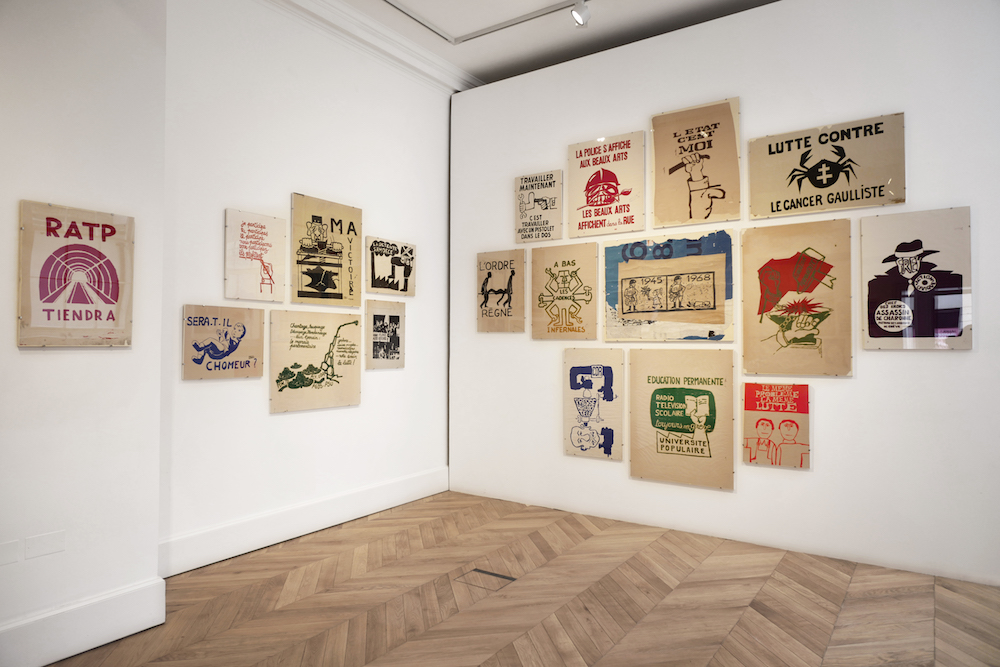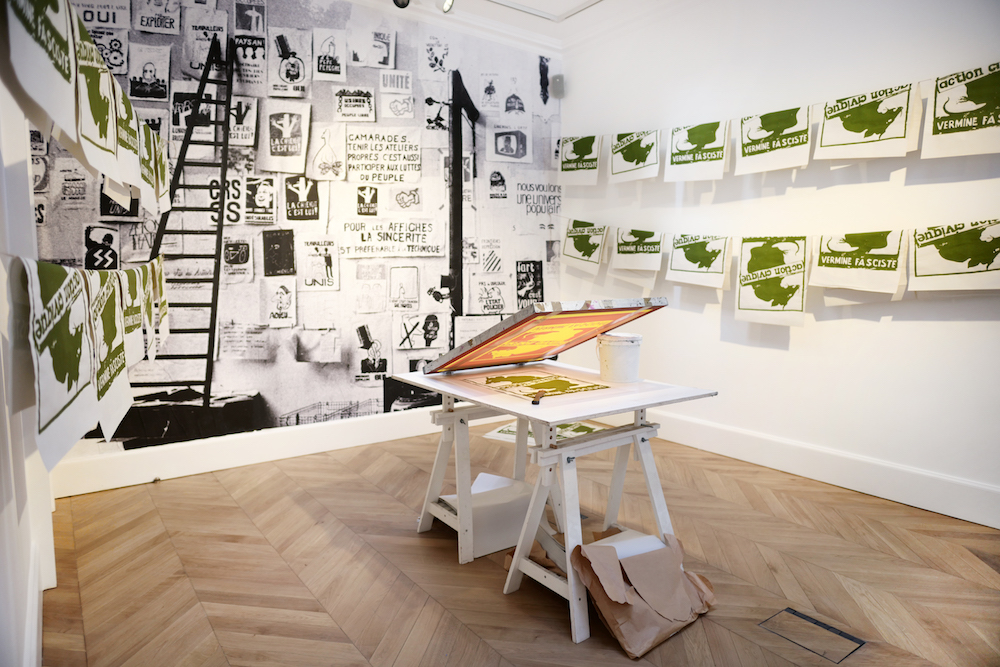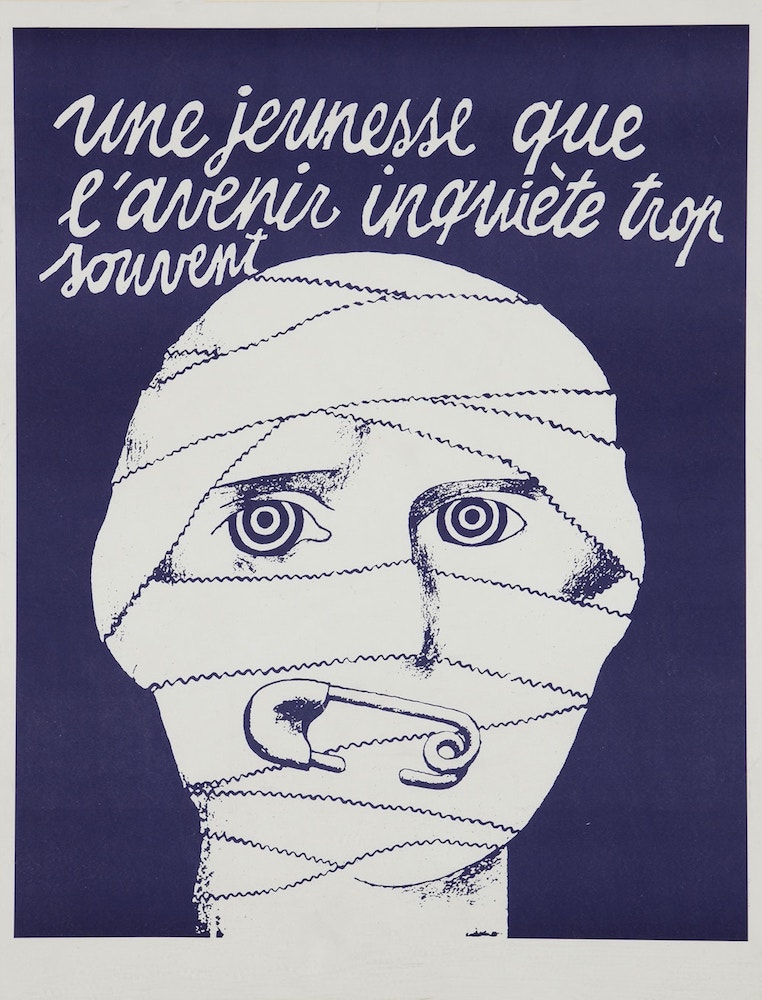Fifty years on from the events of May 1968 in Paris, Jo Lawson-Tancred traces the graphic legacy of a protest that was felt around the world
“To use [the posters] for decorative purposes, to display them in bourgeois places of culture or to consider them as objects of aesthetic interest is to impair both their function and their effect” – Atelier Populaire, frontispiece to Revolution, 1969.
The Atelier Populaire was a workshop of student activists and professional artists who occupied the lithography studio at the Ecole des Beaux-Arts in Paris, producing posters that would come to symbolise the spirit of the Mai 68 uprisings in Paris. The Atelier was fiercely defensive of the images that it produced, of their integrity and their impact, which leaves us in a precarious position as we look back on the events fifty years later. In full acknowledgement of their past, street art dealer Steve Lazarides has nonetheless chosen to commemorate the milestone with a short exhibition of the posters at Lazinc, his Mayfair gallery.
As a peaceful sit in at the bleak western suburb campus of the Universite Paris Nanterre in late March, the catalyst for the protests that Spring was unassuming. Held in response to the lack of co-ed dorms and an overly authoritative curfew that banned men and women from meeting after 10pm, this extremely specific grievance would escalate quickly, incorporating workers into an attack on Charles De Gaulle’s government and conservative French society at large.

When the Atelier eventually occupied the studio, a vote was cast to select the best poster designs, which were then mass produced and plastered across the city so that each morning Parisians awoke to a sudden sea of graphics and slogans. Lazarides admires their directness, “it’s quite often one colour and a very simplistic message”, as well as their fraught history, “[they] belong to the disenfranchised and dispossessed, this was their only way of getting their voice heard”.
As we become increasingly caught up in the urgency of our own times, with the rise of populism, threats to democracy and new social justice movements, it is easy to forget that the 20th century was equally peppered with its own outbursts. Still, we might be tempted to see ourselves as living through a uniquely visual era, with internet memes sometimes giving way to more potent viral imagery or global movements assembling in mere hours behind the power of a particularly pithy hashtag. If the Mai 68 posters were effective because they reproduced a single motif, we now have the technology to do that almost infinitely.
Despite this, Lazarides believes that “there are fewer and fewer people making protest art, people are resorting to just Instagram stuff… but it depends where you look in the world.” From Kabul, Afghanistan, he mentions Shamsia Hassani, a 26-year-old fine arts lecturer at the local university who produces street art, and ArtLords, an anti-corruption group who put out graffiti messages. “Most of the protest art on the street is coming out of the Middle East, as a result of the oppressive regimes and people putting their lives on the line to get a message out there.”

Social media could amplify these local messages on a global level, but when engagement is too easy it ends up quite disengaged – lazily sharing content, which is potentially fake, as a form of ‘virtue signalling’. Reposting an image has a very different tone than taking to the streets and risking arrest.
Lazarides doesn’t believe there’s been a corresponding dip in creativity though, “we’ve got 14-year-old kids making broadcast quality videos on an iPhone, they’re still getting their message out just in a different way.” Yet, still, the benefit of street art is that its message is visible to all, and it can be responded to in that same public space, potentially creating a forum of contrary ideas that at least makes us aware of other arguments.
Can we consider these protest posters art? As Lazarides points out, “the people that designed them stayed anonymous, and they produced them as a collective.” This demonstrates how dangerous the production of these posters was, but more importantly, it shows the Atelier’s collaborative approach and their uncompromising belief in a greater power than that of the individual. Nobody has since taken credit for a single poster design, even as it has become safer to do so. This feels distant from today’s culture, in which artists are forced to fight to stand out, to get appropriately credited or compensated for their work.

To recognise the wider movement in which these works arose, and so their less aesthetic aspects, the show included memorabilia, magazines and film clips as well as the recreation of an atelier with screenprint and washing line. Discarded prints have been left hanging, a reference to the uprising’s sudden end. Lazarides justifies doing all this in a gallery setting because he believes the posters “need to be aired. There’s a poster about immigration that fifty years on still needs to be seen.”
For Lazarides, the show is “a celebration of what they did more than anything”. But is it art? “I’d hang them on a wall so if that makes it art, that makes it art.”





